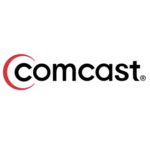
Six months into the program, Comcast released a progress report on its Internet Essentials program – the low-cost Internet and training offering that Comcast led the pack with as a condition to its merger with NBC Universal. The program provides low-cost broadband service for $9.95 a month; the option to purchase a full-service, Internet ready computer for under $150; and multiple options for digital literacy training in print, online and in person.
In a blog post, Comcast listed a litany of achievements in the first six months of the program including:
- Publicized the program across more than 4,000 school districts and over 30,000 schools, which have approximately 3.5 million National School Lunch Program (NSLP) families, of which 2 million qualify for free meals under the NSLP and, therefore, are eligible for Internet Essentials;
- Worked with more than 3,000 partners, including governors; mayors; local, state, and federal legislators, and community-based organizations, including churches, libraries, and PTAs, to promote InternetEssentials and engage eligible families in their communities;
- By the end of 2011, over 10,000 individuals and organizations had registered for the Partner Portal, the portal had experienced over 100,000 unique visits, and partners had requested 11.5 million pieces of promotional collateral —all at no charge to the partner organizations.
- Offered approximately 300 in-person digital literacy training sessions with more than 1,250 individual attendees;
- Empowered nearly 100,000 Comcast employees to directly connect eligible families in their communities;
- Connected over 41,000 families (an estimated 160,000 Americans) to the power of the Internet in their homes, some for the very first time; and
- Distributed over 5,500 computers at less than $150 each.
At a community event this month at Comcast’s Washington offices, Comcast Executive Vice President, David Cohen noted Comcast’s early success in getting the program up and running – and commented on Comcast’s early learnings. “…We learned that, in the early months of the program, we may have signed up some of the more digitally literate of the unconnected – those who may have had a computer already, but chose not to connect to the Internet…we realized that our connection to schools are among the top keys to success…and we are studying our participants to understand how to make the program more effective.â€
Cohen went on to talk about the upgrades to the program, including an increase in speed, expanded eligibility to families eligible for reduced-price lunch, which expands availability to an additional 300,000 homes, thereby making it available to 2.3 million low-income homes nationwide. Cohen suggested future efforts would include partnering with the Connect2Compete program that the remainder of the cable systems are rolling out.
“We hope that, by partnering with Connect2Compete, we can cross-refer families outside of each other’s footprints, perhaps get more scale in the purchase of hardware…there is much more to be learned during our commitment to this program…â€said Cohen.
One of the most interesting facts from this initial report is that a much lower than expected number of families opted for the discounted computer system – only about 1 in 7 families decided they needed a computer when signing up for the home Internet service.
The program is in its infancy, but these numbers suggest the possibility that the expense of hardware may not be as big an issue as previously thought.  It is possible that computer ownership may be high or it is possible that the first to sign up were the most computer literate — only time will tell the difference.
The Digital Divide represents a myriad of entrenched cultural barriers and thinking that are not easily overcome.  The first months of the program provides powerful learning for Comcast, its partners and other program operators. Much work is to be done in expanding participation and driving awareness, but this is a very good start.
Cohen went on to say “the Internet Essential program received more than 750,000 media impressions in 2011…compare that to our launch of a high-speed business Internet product in the same year, which received about250,000 impressions, and you know that Comcast is pushing hard to get this program noticed and to get families to sign up.â€
Comcast announced it is doubling the speed of service for Internet Essentials.  The proposed increase is a nod to the savvynature of this particular consumer segment – they know good value and will spend their hard-earned dollars only when necessary.  One hopes that increasing the value of the program will go a long way to increasing its penetration across the communities it serves.

